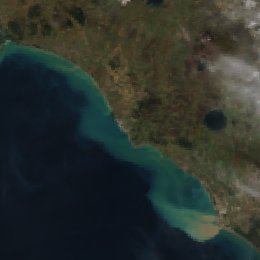ochre
Water rich in suspended matter or shallow with sediments on its bottom appears greenish or blueish cyan in the VIIRS True Colour RGB images. It may appear also brownish.
The image below shows an example. The water of the Adriatic Sea has a very different colour along the Italian coast. Here the water is shallow, the coast is mostly sandy and the rivers bring sediment into the sea.
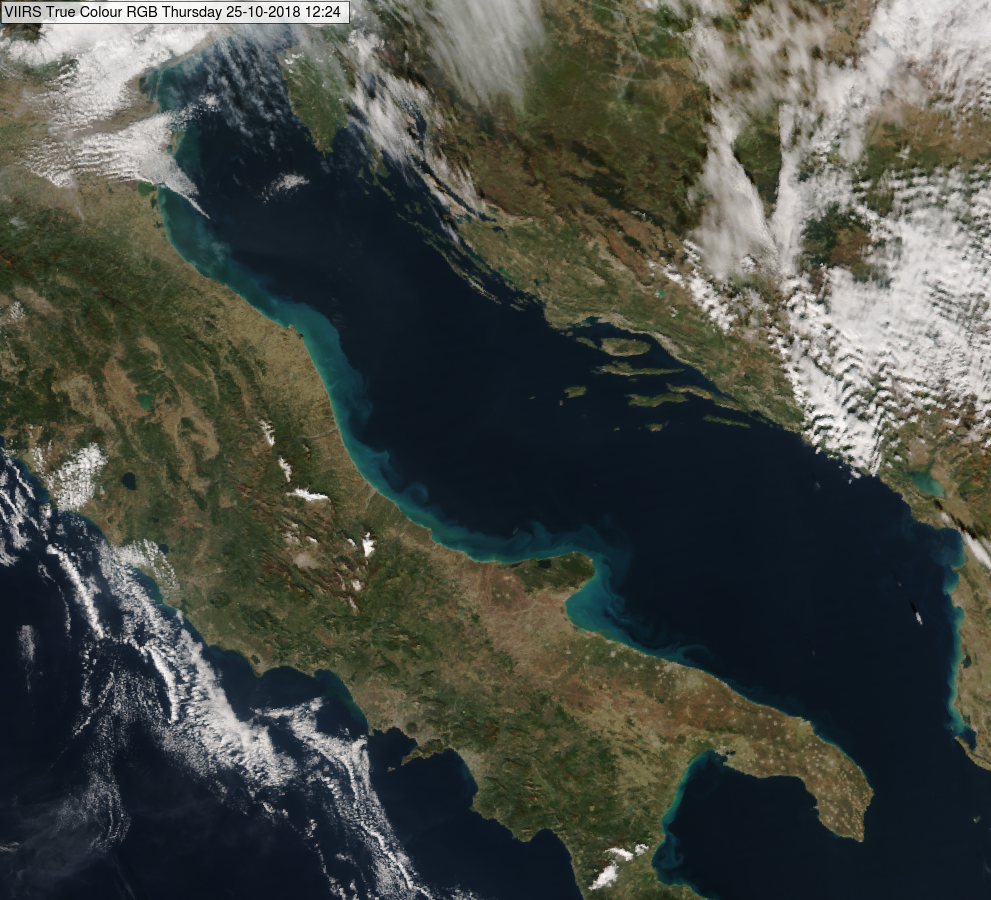
NPP, VIIRS True Colour RGB image for 25 October 2018, 12:24 UTC
The Hungarian Lake Balaton and the Lake Neusiedl on the Austrian Hungarian border are shallow and their bottom is sandy/silty. They appear greenish cyan in the following image.
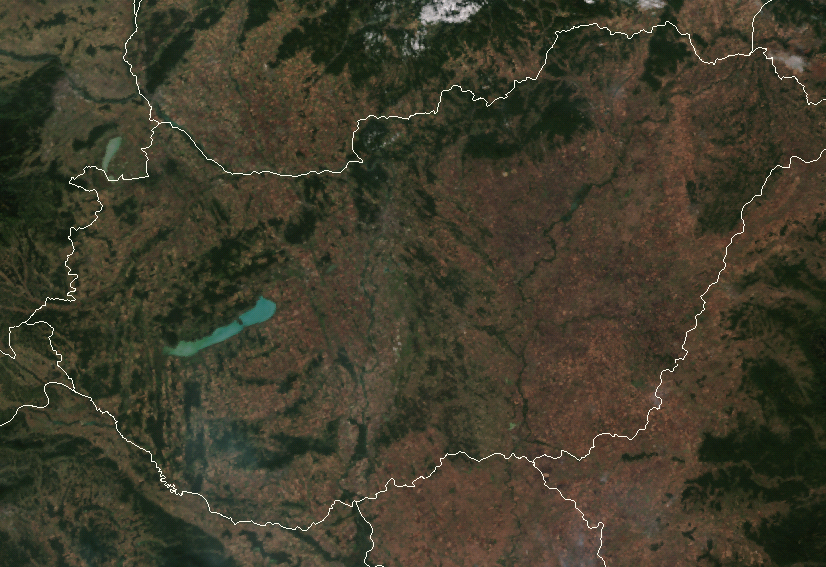
NPP, VIIRS True Colour RGB image for 28 September 2018, 10:49 UTC
The next image shows the shallow Sea of Azov and the much deeper Black Sea.
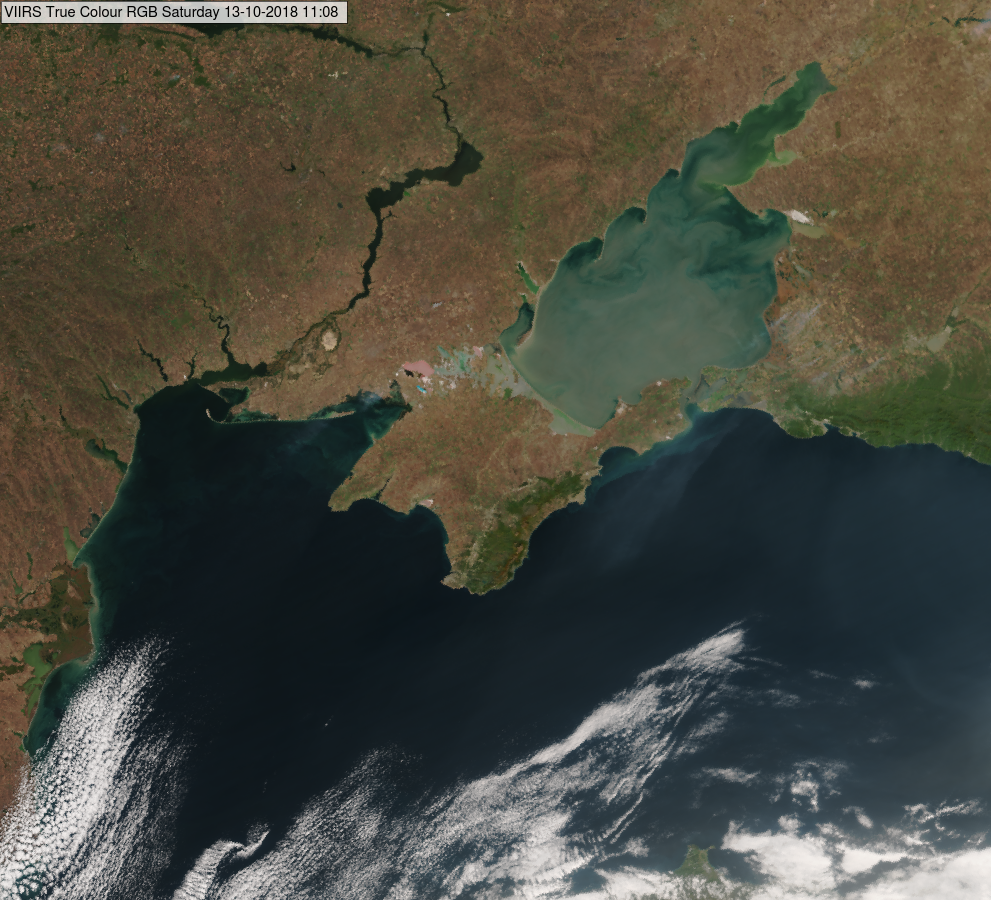
NPP, VIIRS True Colour RGB image for 13 October 2018, 11:08 UTC
The next image shows the region of the Gironde estuary in France. The Garonne river transports sediment into the Atlantic Ocean.
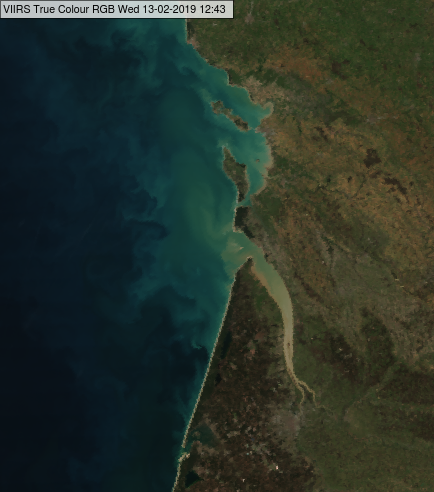
NPP, VIIRS True Colour RGB image for 13 February 2019, 12:43 UTC
The next 2 images show sediment plumes around Mississippi river delta and in East China Sea.
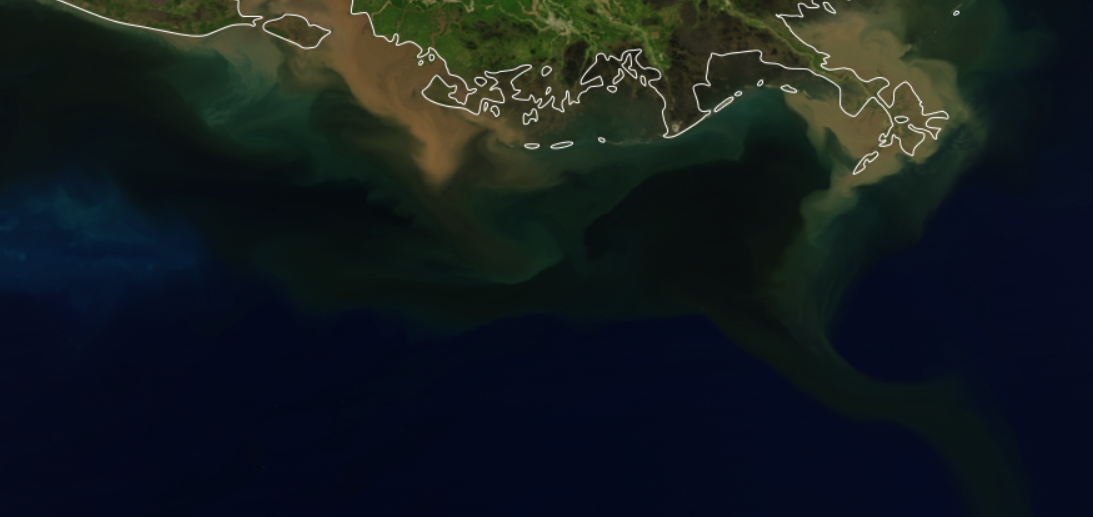
NOAA-20, VIIRS True Colour RGB image for 17 April 2018
(Source: https://www.star.nesdis.noaa.gov/sod/mecb/color/
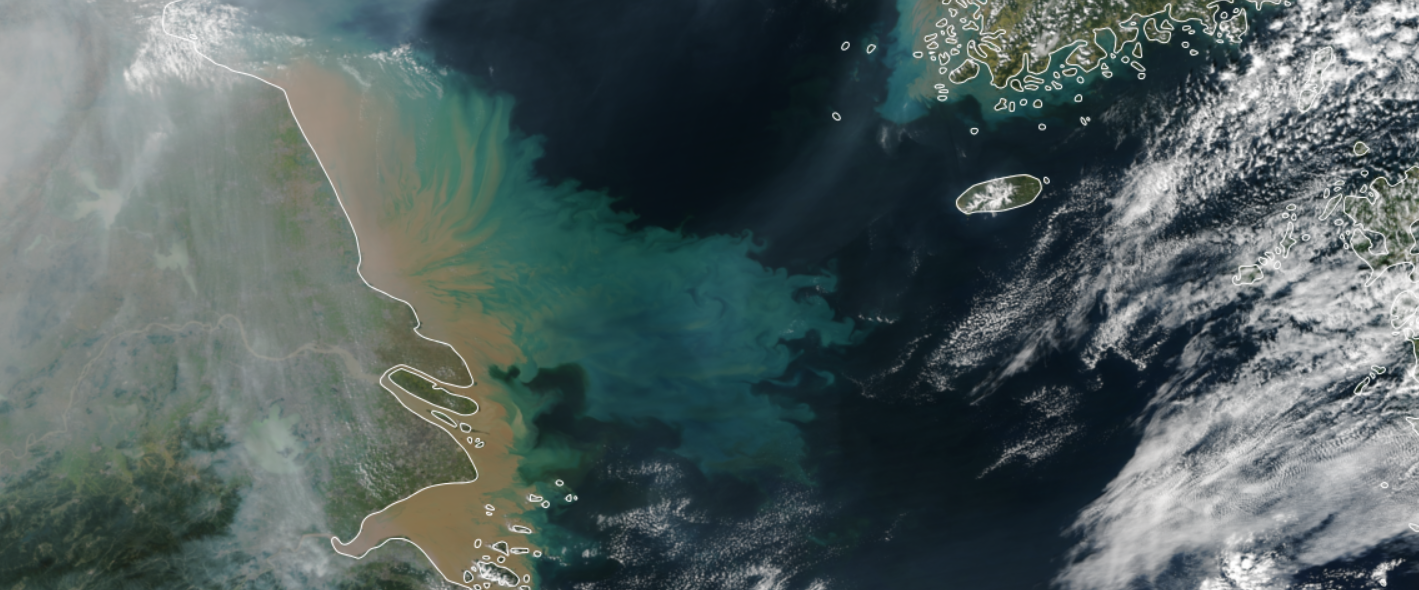
NPP, VIIRS True Colour RGB image for 15 October 2015
(Source: https://www.star.nesdis.noaa.gov/sod/mecb/color/
Phytoplankton is a microscopic organisms that live in watery environments. When conditions are right, phytoplankton undergo explosive population growth, creating blooms visible in True Colour RGB images. The next image shows an algae bloom example in in Gulf of Mexico.
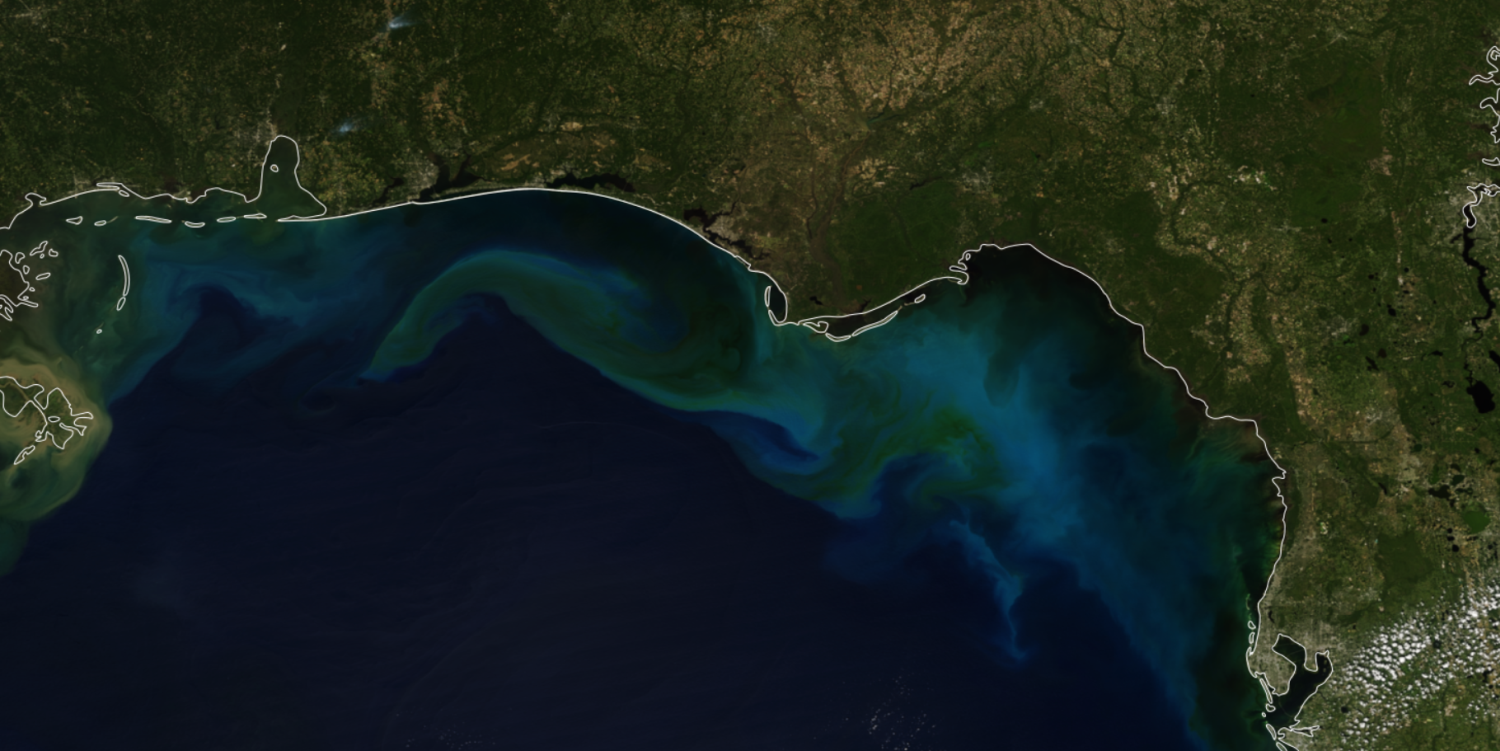
NOAA-20, VIIRS True Colour RGB image for 13 October 2018
(Source: https://www.star.nesdis.noaa.gov/sod/mecb/color/
Note that:
• The water reflectivity depends not only on the water characteristics but as well as on the solar and satellite viewing directions. Towards the edge of the swath the colour shades may be brighter, while along the sub-satellite track it might be slightly darker.
• Deep, clean water bodies appear dark blue, almost black in the True Colour RGB, see examples separately.
• If there is high concentration aerosol plume above the sea (such as lofted dust, smoke) the colour of the sea trough the aerosol layer modifies.
• Sea ice appears whitish.
Explanation of the colour of suspended matter rich water in the True Colour RGB (see the recipe):
The reflectivity of deep, clean water is very low in all three visible channels, so the deep, clean water bodies appear dark blue, almost black in the True Colour RGB.
In case of suspended matter, the reflectivity values increase. The resulting colour depends on the type and concentration of the sediments.
Fog over the North Sea and in the eastern valleys of Scotland and England are yellowish/ochre in the Cloud RGB images, because their reflectivity values are high and close to each other in both visible channels, the 0.63 and 0.87 micron channels, while their cloud top temperature is relatively high (close to the temperature of the surface). As the 10.8 micron channel is inverted in this RGB, warm temperature means dark shades in the blue colour beam. Nevertheless the blue colour beam is weaker than the red and green beam. This leads to a yellowish/ochre colour of low clouds. See the recipe.
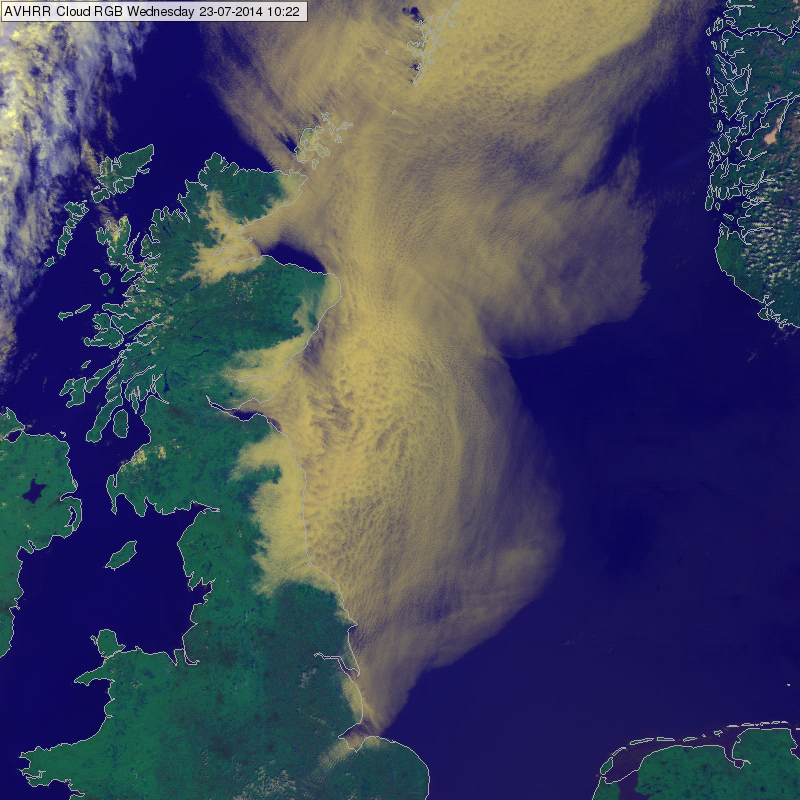
MetOp AVHRR Cloud RGB image, 23 July 2014 10:22 UTC
Mid-level clouds depict in an ochre colour in the Dust RGB images.
Ochre contains a higher amount of red combined with a lesser amount of green.
The red colour beam consists of the brightness temperature difference (BTD) IR12.0 - IR10.8. This difference is around zero for mid-level opaque clouds. Given a temperature range from -4°C to +2°C, the red colour contribution is medium to high.
The BTD (IR10.8-IR8.7) is ~(2-4 K) for water clouds and low (around zero) for ice clouds. A mid level cloud is usually a mixed phase cloud so it has a BTD in between. As for the green component a strong gamma correction (with 2.5 gamma) is applied, the green signal becomes medium strong (or a little weaker).
The colder the clouds, the smaller the blue colour contribution. For mid-level clouds, the blue colour contribution is small.
The Dust RGB image below shows ochre mid-level clouds over the Ukraine and Romania.
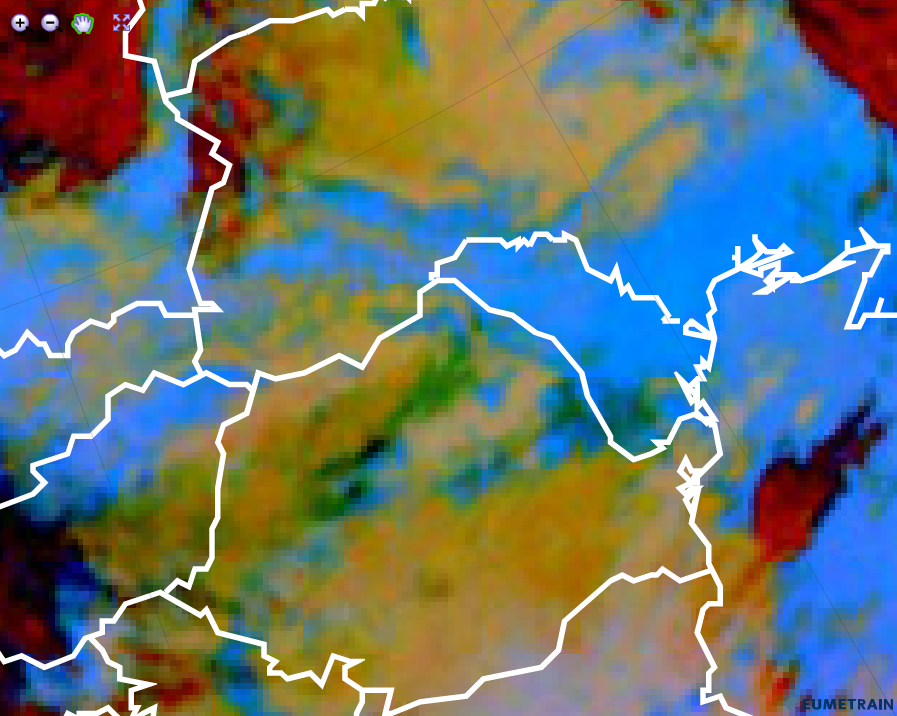
Dust RGB from 21 August 2015, 12:00 UTC
Explanation of the ochre colour of mid-level clouds in the Dust RGB (see the recipe):
In case of mid-level clouds, red and green colour beams contribute most (with red a bit more than green), while the blue contribution is rather weak.

